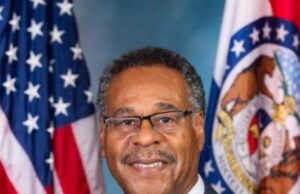Report Offers Guidance on Disaster Recovery, Rebuilding for Resilience
CAMBRDGE, Mass. (July 22, 2016) – (RealEstateRama) — New research published by the Lincoln Institute of Land Policy shows how metropolitan regions can rebuild for greater resilience during the reconstruction process after major disasters, whether earthquakes, tsunamis, hurricanes, or terrorists attacks.
After Great Disasters: How Six Countries Managed Community Recovery, by Laurie Johnson and Robert Olshansky, draws on the authors’ unrivaled experience chasing disasters around the world, playing an advisory role in recovery efforts, and learning how to plan for natural disasters so the recovery process leaves communities in better condition than they were before disaster struck.
The report identifies lessons from six countries that employed different management approaches while recovering from major disasters: the 2008 Wenchuan earthquake in China; the 2010 and 2011 Canterbury earthquakes in New Zealand; the 1995 Kobe earthquake and 2011 Tohoku earthquake and tsunami in Japan; the 2001 Gujurat earthquake in India; the 2004 Sumatra earthquake and tsunami in Indonesia; and the September 11, 2001 terrorist attack in lower Manhattan, 2005 Hurricanes Katrina and Rita, and 2012 Hurricane Sandy in the United States.
Each of these governments faced considerable uncertainty and had to balance the tensions between speed and deliberation, and between restoration and betterment.
Extreme weather events and other disasters are becoming a fact of life for many metropolitan areas, exacerbated by the impacts of climate change, said Armando Carbonell, senior fellow and chair of the Department of Planning and Urban Form at the Lincoln Institute, who noted that the report was a natural outgrowth of the institute’s work in climate adaptation.
“While not all disasters are climate related, the broader lessons on post-disaster recovery are relevant for a world in which the combined effects of climate change and urbanization will result in an increasing incidence of disasters,” he said. “Pre- and post-event planning will be essential to reduce human suffering and economic loss.”
The aftermath of major natural disasters can change the fortunes of a city or region forever. Post-disaster reconstruction can offer opportunities to fix long-standing problems: to improve construction and design standards, renew infrastructure, create new land- use arrangements, reinvent economies, and improve governance. If done well, reconstruction can help break the cycle of disaster-related impacts and losses, and improve the resilience of a city or region.
To date, there has been little systematic knowledge of how to make recovery work well. When a catastrophic disaster strikes, leaders of affected communities know that they lack relevant experience, and they seek lessons from others. Typically, they muddle through, innovate, and learn as they go. But later, many note that their recovery could have been faster, better, and easier if they knew then what they have since learned. Given the growing number of disaster recovery experiences, the authors say, the time has come for organizing and synthesizing common lessons.
In examining the case studies, the authors offer the following recovery recommendations that reflect a set of core principles: primacy of information, stakeholder involvement, and transparency.
· Enhance existing government structures and systems to promote information flow and collaboration.
· Emphasize data management, communication, transparency, and accountability.
· Plan and act simultaneously involving continuous monitoring, evaluating, and correcting.
· Budget for the costs of communication and planning. Increase capacity and empower the governmental levels closest to the disaster to implement actions.
· Avoid permanent relocation of residents and communities except in rare instances when public safety and welfare are at risk, and only with full participation of residents.
· Although speed is important, reconstruction should not be a race.
Recovery after great disaster is always complex, takes a long time, and never occurs fast enough for affected residents. However, the process can be improved by setting more realistic expectations at the outset, working to restore communities and economies quickly and equitably, empowering stakeholders to participate in the process, improving pre-existing problems, ensuring governance for recovery over the long term, and reducing the risk of future disasters. Thinking ahead about strategies for future disasters improves community resilience — the ability of the community to survive, adapt, and recover from extreme events.
Over the years, Johnson and Olshansky have coauthored several publications, including Opportunity in Chaos: Rebuilding After the 1994 Northridge and 1995 Kobe Earthquakes and Clear as Mud: Planning for the Rebuilding of New Orleans. They were interviewed forthis faculty profile in the April 2016 issue of Land Lines.
After Great Disasters: How Six Countries Managed Community Recovery will be useful to urban planners, local government officials and staff, state and national governments concerned with urban policy, and disaster relief organizations. The report is part of a series of Lincoln Institute publications focused on planning for and recovering from extreme weather events induced by climate change: Lessons from Sandy, Resilient Coastal City Regions, a report set to be released next month, Buy-in for Buyouts, and the related forthcoming book Nature and Cities: The Ecological Imperative in Urban Planning and Design.
About the Authors
Laurie Johnson is an internationally recognized urban planner who specializes in disaster recovery and catastrophe risk management. She is a visiting project scientist at the Pacific Earthquake Engineering Research Center at the University of California-Berkeley, chairs the U.S. National Advisory Committee for Earthquake Hazards Reduction, and serves on the steering committee of the Geotechnical Extreme Event Reconnaissance organization.
Robert Olshansky is professor and head of the Department of Urban and Regional Planning at the University of Illinois at Urbana-Champaign. His teaching and research cover land use and environmental planning, with an emphasis on planning for natural hazards. He has published extensively on post-disaster recovery planning, planning and policy for earthquake risks, hillside planning and landslide policy, and environmental impact assessment.
The Lincoln Institute of Land Policy is an independent, nonpartisan organization whose mission is to help solve global economic, social, and environmental challenges to improve the quality of life through creative approaches to the use, taxation, and stewardship of land.
Contacts: Anthony Flint 617-503-2116
Will Jason 617-503-2254
















